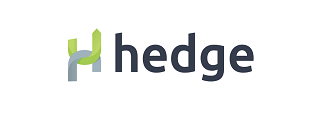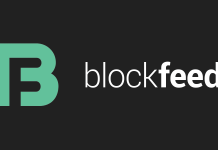Interview with Gasper Stih community manager of Hedge Crypto.
What challenge is Hedge addressing?
The Hedge Project is addressing the current non-existence of
1) Professionally managed and maintained crypto index suite,
2) Crypto Traded Indices™ (ETF equivalents in the crypto space)
3) Derivatives whose underlying is a market-wide crypto index.
What is the scale of this challenge?
While the described concepts are well established in the traditional finance, they are non-existent in the crypto space. The Hedge Project is taking the established solutions and applying them to the specifics of the crypto markets. Challenges, which have been addressed, include fragmented market microstructure, yet-to- be-established law of one price, regulatory grey area for some exchanges etc.
We believe we have adjusted the traditional concepts sufficiently so that they are ready to be
applied to crypto markets.
How does Hedge turn this challenge into an opportunity?
Being the first in the field and the pioneer thereof, we developed the solutions on the go. Because the law of one price does not yet apply to (all) cryptocurrencies, we have designed our indices as secondary indices – drawing inputs from the primary price indices of individual currencies whose trading pairs are weighted according to 7d trading volume.
The indices are rebalanced in real time and recomposed monthly to avoid “fat fingers” trades and resulting flash crashes. Authorized participation for the CTI trading is being discussed with strong players on the market, who have a lot of experience with crypto arbitrage and sufficient asset pool to hold the CTI unit price as close as possible to its Net Asset Value.
Given some recent favourable regulatory signals from Moscow Stock Exchange and Luxembourg Financial Regulatory Authority, we believe we can list the CTI units on a regular stock exchange in the medium term.
Can you showcase some team members/advisors which have a strong background? What is their connection with this particular project?
Savo Lovšin (Hedge Project Manager) – Having worked for one of the largest market-making,

arbitrage trading companies and as Head of Financial Advisory at one of the Big4 companies, Savo has broad experience in markets, trading, arbitrage strategies and financial modelling. Currently he is dedicated full-time to bring Hedge Project to the market.
Giovanni Lesna (Product development) – A financial product specialist in mutual funds. Business consultant with the trading platform, banking risk, and fin tech experience. Finance specialist and investment analyst with an international experience in the insurance industry – Inv. management, Inv. operations, and Inv. accounting.
Janez Benedik (Investment analyst) – Finance specialist and investment analyst with an international experience in the insurance industry – Inv. management, Inv. operations, and Inv. accounting.
Kristjan Dekleva (Investment analyst) – Master of Finance, focused on private equity, corporate
finance and asset management. With work in academic research, and experience in financial services industry, as well as diversified studies, Kristjan is able to see challenges at different angles. Currently he is pursuing the Chartered Financial Analyst designation.
Luka Gubo (Advisor) – A Senior Quantitative Analyst developing quantitative models and
implementing them into the investment process, managing FT Quant, a quantitative global fund fully regulated in EU and developing risk management models.
Gašper Štih (Brand manager) – Community manager with a keen focus on setting and implementing social media and communication campaigns to align with marketing strategies.
Find more info on the team at http://www.hedge-crypto.com/
Does Hedge have any strategic partnerships?
Rialto.ai is providing us with the datafeed for the calculation of our indices. Further cooperation is being discussed. We are currently in talks with several VC funds for a strategic investment.
Does Hedge have a viable product at this time?
Yes. First in line of our indices, the CCX30, has been released on Sept 24, with other indices in the pipeline.
Crypto 30 Index seeks to represent the overall performance of the 30 largest
cryptocurrencies worldwide by market capitalization, it is rebalanced continuously and recomposed monthly, and is capped at 20% to ensure sufficient exposure to small caps. Next to follow are uncapped CCX30 MCap and equal-weighted CCX30 EW. In the following months we also plan to introduce Crypto Asset Index Family, Crypto Income Index Family, Crypto Volatility Index and Crypto Sector Indices, while simultaneously continuing the development of the platform for trading of the aforementioned indices.
What is the status or this product? (Alpha Beta or production)
In production.
How many users are actively using this product?
n/a
What are the key differences between Hedge and Blackmoon?
Blackmoon is building an environment/platform for actively managed open and close ended funds investing in traditional equity, alternative and pure crypclose-ended. They have recently closed the ICO and have yet to establish their first fund. Hedge is focused on Crypto Traded Indices, a crypto ETF equivalent, a passive, market-wide investment vehicle, as well as derivatives, whose underlying is the index.
What are the key differences between Hedge and Iconomi?
Iconomi is, like Blackmoon, a platform for actively managed funds. They offer, however, only crypto payments. Currently, they operate through a third party a semi-indexed open ended fund (BLX) and high fees, high performance close ended fund (CCP).
What should investors look for when investing in a crypto index fund company?
They should look for return history, if the funds are actively managed, for the reputation and
experience of the fund manager, if they are passive vehicles like CTIs, for the ability and capital base of the authorized participants, indexing procedures, clarity of the rulebook and factsheets, direct and indirect fees, etc. A lot of research has been done in the traditional equity markets. A large majority of actively managed funds does not outperform their stated benchmarks even before the fees, after they are taken into account, almost all but the very best finish behind the indexed passive investment vehicles.
How will the data that is being sourced from Rialto be used?
Rialto.ai has already compiled a real-time datafeed from exchanges where it engages (or plans to engage) in arbitrage. This gives us 2 advantages: 1) the data is already aggregated to the point of being ready made for our use, 2) Rialto.ai has already applied filters on which exchange is appropriate for arbitrage, such as regulatory compliance, usable API, operational security etc. Because we will not trade our own instruments, there is not conflict of interest.
What is the advantaged of institutional investors when using Hedge-Crypto?
Easy diversification with a single click. Well established indexing procedures and expert index
committee ensures that our instruments are “what you see is what you get”. Once we establish the token lending market, they will also be able to short certain instruments and/or underwrite the derivatives themselves, thus tailoring the risk exposure according to their preferences.
How will the assets be secured?
Most of the assets will be placed in MultiSig cold wallet and our Swiss fiat bank account. A small fraction of assets needed for trading and CTI arbitraging will be in hot wallets across exchanges and our own platform. Additionally, we will also be regularly audited by one of the Big4.
What are the management fees and charge to buy, stay in and exit an index?
Exact fees are yet to be determined, but we have a pretty good idea already. Annual management fee for CTIs 0.7-1.2%, possibly regressive according to assets held, payable per day, trading fees 0.1- 0.2% per trade (as is the case with other exchanges). All instruments and fees are denoted in USD. Whether they are payable directly in USD or with HDG at the current spot rate depends on the instrument itself.
What is the structure of the ICO? (Bonuses, Dates, Market Cap)
Beginning: Sept 15 2017
End: Oct 15 2017
Day 1 – 15% additional HDG tokens
Day 2 – 12% additional HDG tokens
Day 3 – 10% additional HDG tokens
Day 4 – 9% additional HDG tokens
Day 5 – 8% additional HDG tokens
Day 6 – 7% additional HDG tokens
Day 7 – 6% additional HDG tokens
Day 8 – 5% additional HDG tokens
Day 9 – 4% additional HDG tokens
Day 10 – 3% additional HDG tokens
Soft cap: USD 1.5 mio
Hard cap: USD 15 mio
No presale. (check terms and conditions, strange wording, page 6)
50 mio HDG created, 30 mio offered to the crowdsale participants, at the price 1 HDG = 0.002 ETH
Unsold tokens are burnt. If this occurs, insider allocation is also burnt proportionally.
What are the requirements to participate in the ICO?
Participants need to be in control of a private Ethereum wallet and at least 18 years of age.
Additionally, participants must not be a citizen or a resident of the following countries:
- Bangladesh
- Ecuador
- Bolivia
- India
- Indonesia
- Jordan
- Kyrgyzstan
- Namibia
- China
and other countries and/or territories where applicable laws prohibit such crowdsales.
The aforementioned geographical restriction applies also to legal entities.
What are the pros and cons for the token holders?
Any trading on the platform will be conditioned on the payment of the fees with HDG.
Tokenholders will also benefit from our buyback program: 20% of all net fees collected in all our lines of business (denominated in USD) will be used to buy back HDG on the market and burn them, thus decreasing supply, raising price and returning the generated value to our supporters.
Was there a pre-ico?
No.
How many tokens will be issued?
50 million
Is there a cap on the ICO?
Soft cap USD 1.5 mio
Hard cap USD 15 mio
Would you like to add any further info?
You can meet us at Blockchain Solutions Forum in Barcelona Oct 3-5, stand 340 and Blockchain for finance conference in Dublin Oct 3-4.
What do you see as the greatest obstacle to cryptocurrency adoption as a new accepted asset class?
Trading and cryptocurrency usage in everyday life need to be simplified to the point, where an average consumer will be indifferent to using fiat or crypto. The market needs to mature enough so that at times extreme volatility would stabilize.
Right now, the trading is almost entirely influenced by retail investors. A large enough influx of institutional money would stabilize the market and give people some confidence that their crypto holdings would not be suddenly worth half what they were yesterday. Also, still underdeveloped regulation in some countries is keeping many conservative investors away from crypto. Once these things get settled, a wide-scale adoption is possible.
In which jurisdiction is the company incorporated?
Kanton Zug, Switzerland.
Is this company part of a group of companies?
No.
How is the project balancing the interests of the token holders and the shareholders?
Tokenholders and shareholders will be distributed any profits proportionally: 20% tokenholders through buyback and burn, 80% for all shareholders combined.
Will the project be audited and will the audit reports be fully published?
Yes. We wish to be completely transparent and will engage a Big4 auditor for all our business
activities.
For more information please visit: hedge-crypto.com
We thank Gasper Stih for the interview.











